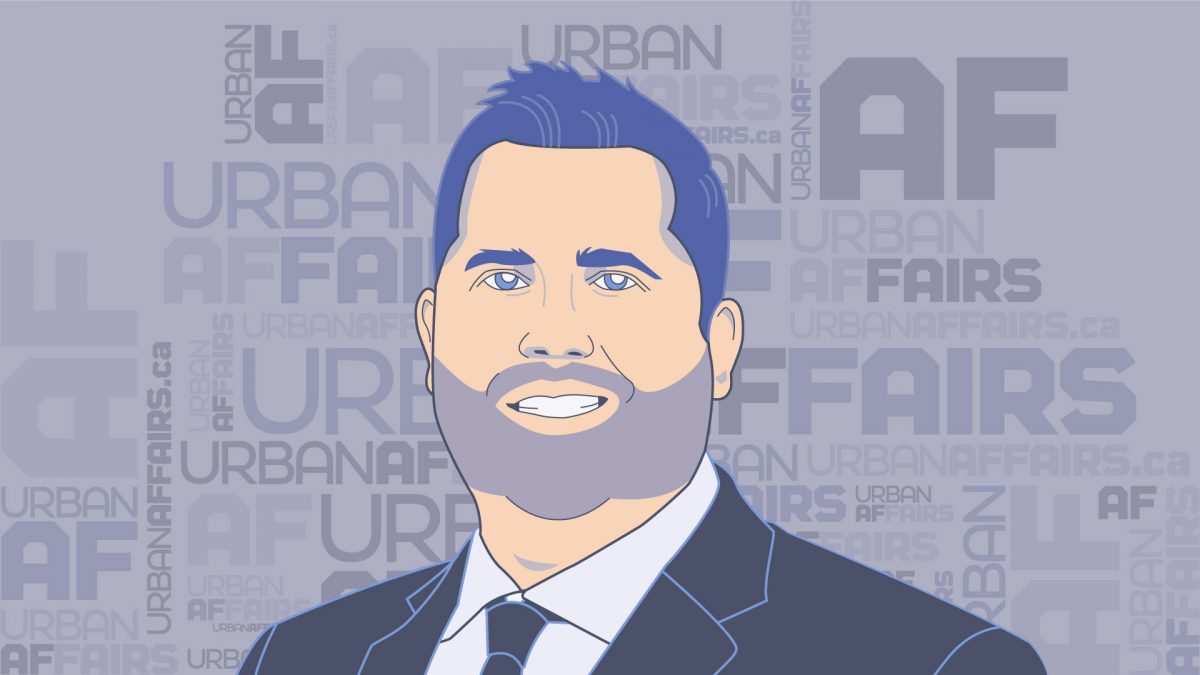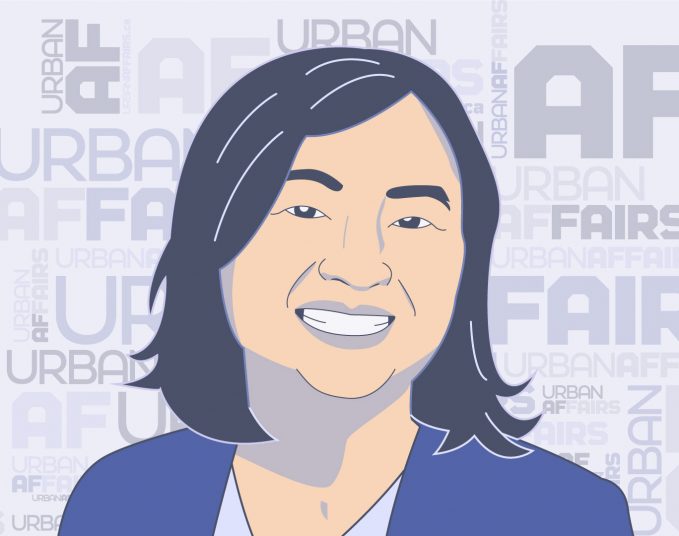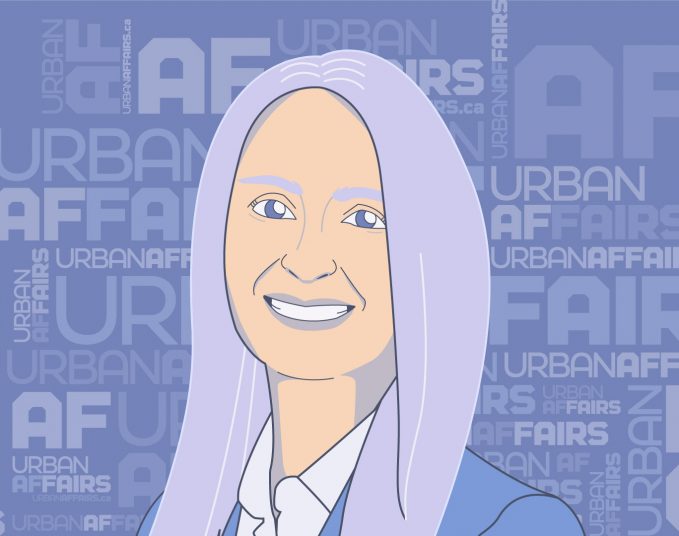This is the third in a series of profiles of Edmonton’s city councillors. We’ve spoken to Karen Principe and Keren Tang — now it’s Michael Janz’s turn to be on the Urban Affairs hotseat.
When Michael Janz went door to door in Ward papastew during the 2021 municipal election, he didn’t hear a lot about garbage collection or street cleaning.
He said he heard a lot of visceral reactions to the provincial government’s handling of the COVID-19 pandemic. Because of what he heard at the doors, he believed it would be a good idea for his campaign signage to carry the same orange colours associated with the NDP. Janz, who was an Edmonton Public School Board trustee from 2010-2021, played up endorsements from NDP politicians and influencers. Even though this was a provincial election, he understood that positioning himself as the anti-Tory would work in his favour.
"Even though this was a municipal election, people were furious, and what they wanted to talk about was how mad they were at the UCP."
“You have to look at the municipal election in the context of the ‘best summer ever,’” says Janz. “The rage and the fury at Kenney were off the charts. I was going to houses, I saw a woman who was a nurse, and she was furious at Kenney about her job conditions. Another house, the child had to have his surgery postponed because of COVID rates in hospitals. Even though this was a municipal election, people were furious, and what they wanted to talk about was how mad they were at the UCP.”
Janz positioned himself as a trusted face, someone who had stood up against provincial cutbacks to education and proposed school closures.
“In 20 of the 23 neighbourhoods in the ward, I had been the school trustee since 2010. So, many of the children I had worked with back in 2010, to keep their school open, they’re now voting age adults. When I came to their houses, I heard ‘I remember you.’ At one house, I heard, ‘I remember you, because of you my mom said we didn’t have to take the bus. I’m of age now, and I am voting for you.’”
From the first door-knocking visits, he quickly understood that, at least in his ward, the municipal election was not going to be about local issues, but a “referendum on Kenney.”
His election strategies paid off. With no incumbent running in papastew, he got 8,624 votes. Second-place finisher Susan Field was way back, with 4,362 votes.
“People knew I would bring that same animated courage that I brought to the school board, to City Hall.”
The ward takes in many of Edmonton’s well-established south-side neighbourhoods, including Garneau, Old Strathcona, Ritchie, Hazeldean and Belgravia. The University of Alberta sits in this ward.
Even though Janz says the city had a “send Jason Kenney a message election in 2021,” he is a municipal politician, now. And that means having to work with other levels of government, and to identify areas where City Council can make a difference. And, that means going from macro to micro, to look at how even the smallest changes can affect the qualtity of Edmontonians lives.
He already takes part in neighbourhood walks. It’s as simple as it sounds; he meets with residents of a specific neighbourhood at the local community league, and then they walk together to identify the positive and negative aspects of the community.
“Great cities are built by great neighbourhoods,” says Janz. “This may sound trite, but I said in the campaign that I want to build a dog park for every neighbourhood. People might say, that’s not big-city scale, that’s not world class. But these would make a big difference.
“We have 200 neighbourhoods in the city. If we spent $2 million on playgrounds in every single neighbourhood in Edmonton, would that hit the same outcomes as a new rec centre would? This is the kind of thinking we need to do. We think of these grand mega-projects, like the Stanley Milner [library] recladding or Lewis Estates [rec centre, which council approved to the tune of $283 million back in December]. But, getting back to a small-is-beautiful, incremental investments in communities — one bench, one playground, one dog park — these things matter.”
But, a great, safe, inclusive neighbourhood is one where no one is going without a roof over his, her or their head. And that’s why Janz, who has campaigned for former mayor Don Iveson in the past, says the issue of reducing homelessness is one the city has to prioritize.
“For me it’s the houselessness, and with that comes harm reduction and anti-poverty initiatives. We still have 52,000 children living in poverty. We still spend a lot of money supporting people who are on the brink of falling into poverty. We as a city need to work on a strategy to get the housing built, to deal with harm reduction, to deal with opioid addictions, to deal with the poisonings. I’ve been very vocal lately about the need for decriminalization and safe supply, safe consumption sites. No matter what neighbourhood you live in, we are all losing neighbours. And it’s only escalating, and we’re still seeing no action from the provincial government.
“People say ‘we shouldn’t be paying for this,’ because housing is a provincial responsibility. But the reality is we are paying for it. We are just calling it ‘policing.’ We are spending the second-highest per capita on policing in Canada, next to Windsor, Ontario — 22 cents out of every tax dollar goes to the Edmonton police service. We have one of the most expensive, highly paid police forces in Canada. But, when you talk to the officers, they say ‘we are not doing police work…’ We’re spending a ton of money on the downstream, not on the upstream.”
Janz says that another challenge will be the housing of seniors; we saw a number of COVID outbreaks in seniors’ residences across the province, and he thinks this is going to spur more of our aging population to want to stay at home. “Age in place” is a term that we’re hearing more and more. We will see more seniors being cared for, at home, by family. We’ll see more homes built or renovated with suites for aging parents. As well, Janz speaks of ideas like home sharing, where a student in need of a place to live resides with a senior who needs care. In exchange for the place to stay, the student does work during the week to help the senior. It’s a symbiotic relationship.
But if Edmonton’s future means more seniors staying at home, that means neighbourhoods need to more walkable, it has to be easier for them to access home care. They need to be able to access services close to their front doors.
Which leads us into another discussion. Janz says that this current council has inherited decisions from previous councils, from expanding outward to budget cuts that were made to snow removal. He said the city’s “built form” is all about sprawl, and that makes it difficult to maintain the levels of service.
“We have one of the most sprawling, spread out, inefficiently built cities, that still requires services, like snow removal and everything else. As we move forward with the City Plan, to be able to build more of a sustainable, cost-effective and fiscally sustainable city, means we have to continue to densify and add wealth in our local neighbourhoods. We have to ensure that land is being used efficiently.
“Getting elected and taking office this winter, it was a faceplant into a snowdrift. It was like that for many of the new councillors. The last council set the snow removal budget at a smaller amount. I think we’re at the point where we are over 10,000 kilometres of roads and big-city problems, and we need to look at a reallocation of our snow-removal budget. I know it’s not sexy, but, when your neighbours can’t even walk out the door, when cars are careening through intersections, you’ve got to take care of the snow removal, you’ve got to take care of the ice.
Savvy AF. Blunt AF. Edmonton AF.



